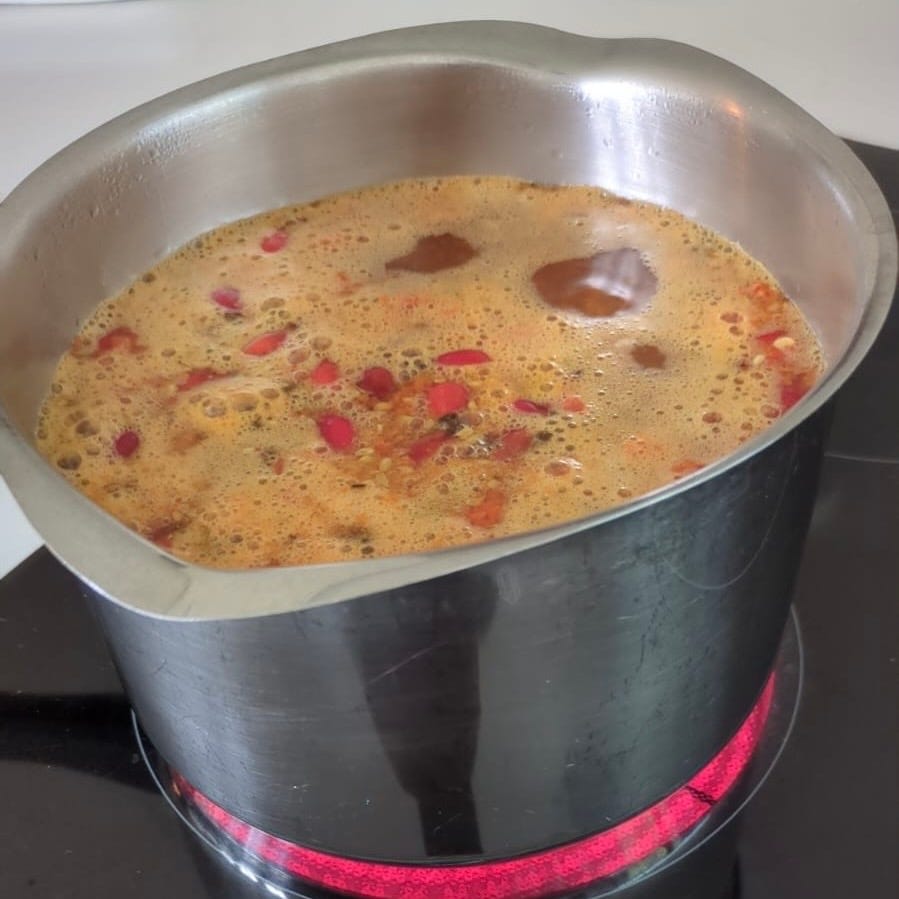I’m starting with a disclaimer that in our busy household, our garden has to work hard at producing by itself due to small pockets of time spent bringing it on. This is the main reason I brought this monthly potting series to my Substack, so amateur gardeners, like me, can have a more condensed monthly round-up.
A round-up that isn’t slick, complicated and overwhelming!
The end of October always has a different feel to the start; the burnished orange glow, the red ivy leaves underfoot, the days are shorter, the sun is lower and the temperatures are dropping. The wild start of autumn with sprawling veg patches and overgrown shrubs starts to be replaced with a more neatened garden in time for Winter. I urge you to take your time as just like Autumn is for slowing down so is your garden and a Winter tidy can be done in small manageable chunks and not rushed. Many plants prefer a later tidy, such as the rudbeckias and echinaceas, which look pretty in late autumn, and their petals can also feed the birds. Holding onto a bit of colour is needed when you look outside on a grey day. I even have cosmos going strong in my border around the ongoing bulb planting, this makes me smile every time I pass by.
Ideas for the Garden this Month
Harvest
Bring in your Autumn lettuce, remaining tomatoes, late radishes, spinach, kale and any second crop of Swiss chard. Pumpkins and squashes can now come in as they love the heat to increase in size, the sun won’t warm them up enough to grow now. Carrots can be covered in straw or fleece to harvest later but with such a wet year it could be better to bring them in this month to avoid potential rot!
Sow and Plant
Shutting the veg bed down altogether for the Winter can be very tempting as it’s hard to motivate yourself to add another ‘to-do’ around all the other commitments. However, picking one or two easy veg to plant will bring motivation and satisfaction when spring arrives and you will have a sense of getting ahead without too much groundwork.
My top picks to plant this month are:
Garlic and overwintering autumn onion sets
Broad beans straight into the soil (except in cold regions)
Spinach and Winter lettuce
If you’re tight, on space, or don’t have a raised bed area, you can easily plant up your winter lettuce in old mushroom trays, seed trays, cold frame or windowsill.
If you fancy getting your garden even more established you can plant bare-root currants
and gooseberries this month, so their roots can become established. We popped two in our borders last spring, so I hope we see these come on next year.
Also, plant out rhubarb sets in the next month or so. I’m hoping I get around to sourcing some, as I have always wanted rhubarb in our garden!
Bulb planting
Having short time bursts in the garden over October and November is perfect for planting bulbs. Too much time spent knelt down isn’t ideal for me, even on my kneeling cushion, so I tend to plant in batches. A lunch hour here or there and an hour on a dry weekend.
Think more when it comes to bulbs. I have spent the past two springs feeling disappointed with too few daffodils and tulips. I have made a small investment thanks to a garden centre gift card we were given and I have planted a real mix. I love that I’m not a meticulous planner of what goes where, so it will be a surprise when they come up!
I would start with daffodil planting, as they favour an earlier plant. Plant each one at a depth equal to two or three times the height of the bulb. I invested (they’re not expensive) in a bulb planter this year and it is such a help in speeding the process up. Try and plant your daffs in clusters and wild areas of the garden rather than a border as the foliage takes up a lot of border room when dying back in late spring.
Tulips do go well in borders and if planted deeper you will see them return every year.
We have also planted a few early bulbs such as crocus and snowdrops. Also, we have included a few such as alliums, iris, and I think muscari (off the top of my head). It makes for interesting colour and depth to have a mix of spring bulbs flowering at differing heights and times. That said do not overwhelm yourself with planting. We have gone a bit more crazy, as our garden was a bit of a bulb blank canvas!
If you want to keep it simple and involve the kids then I highly recommend planting a bulb lasagne pot. It is just what the name suggests, layers of different spring bulbs and soil in between. You can pack in so many and have a large pot as a real spring showcase for your outside space.
Plant out any winter bedding into pots and containers; pansies and cyclamen work well alongside trailing ivy, thyme and oregano herb plants.
Other Jobs for this month
Apply mulch to your borders (avoid the stems of plants, especially lavender and rosemary). You can buy mulch or make homemade mulch, come back in November for more information on that one!
When it comes to pruning, dying-back foliage can be removed to prevent diseases but as I said at the start of this post go slow with the prune. Hardy shrubs and deciduous trees prefer mid-winter and early spring. Although yew hedges can be pruned now to keep neat in time for Winter.
You can also prune; tall and messy perennials, hardy geraniums, buddleia (by a third), blackberries, currants and summer jasmine.
Store dahlia tubers - Cut the stems to around 15cm and carefully lift the tubers out of the ground, brush the soil away and place them in an airy place to dry. Place the tubers in trays or pots and cover them; with dry compost, wood chips, vermiculite or newspaper. If you’re in a mild area of the south and good drainage you can leave them in the ground covered with a thick layer of mulch.
Compost heap - Add in your remaining cuttings from your beds and turn your compost.
Foraging
I have loved including a foraging tip in my monthly potting shed posts. I’m not quite sure how this will work in the winter months, it may just take on a different less foodie twist!
This month it is the turn of the humble rosehip. Quick get out there as I did only a few days ago and find the remaining rosehips from around our village and in our garden.
As well as vitamin C, rosehips are a great source of vitamins A, D and E. They contain anti-inflammatory, anti-oxidants, and anti-ageing properties. They were hailed the vitamin saviour post WW2 and are now definitely making a comeback as a foragers favourite! (Just double-check if you’re on any blood thinning medication that you’re safe to consume alongside).
I followed a River Cottage Recipe. And it has the thumbs up from the youngest gardeners in our home, who are taking a spoonful at breakfast time.
Gather up as many as you can find, as we picked less. We simply adjusted the recipe accordingly. A good tip is to strain through a muslin twice (as the recipe suggests) to avoid the tiny rosehip hairs getting into your liquid.









Share this post